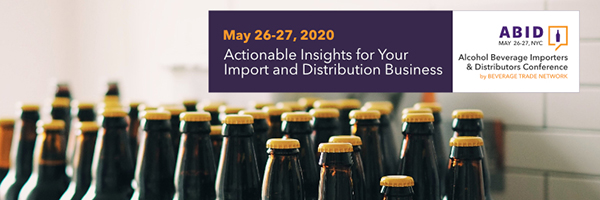Make the dream of running your own import or distribution business a reality with Kevin Rapp, Co-Founder & President of Rapp Wine.
How can you make the dream of running your own import or distribution business a reality? It all starts, says Kevin Rapp, Co-Founder, and President of Rapp Wine, with finding great wines that you want to bring to your home country. In his case, he quit his job in wine sales, got married, and then took a honeymoon vacation to Italy, where he drove all over, meeting great local producers in Rome, Calabria, Sicily, and Puglia. With that fascinating story as a backdrop, Rapp shared what you can expect in your first year as an importer or distributor.
Finding great producers and great wines
It’s important to form the right relationships, says Rapp. You need to be on the same page as your producer, and you need to be as excited about the product as the producer is. In his case, he was fortunate to be able to meet face-to-face with local Italian producers, sample their products, and decide which wines would be the most profitable for his brand-new import & distribution business.
In each case, says Rapp, he focused on wines that over-deliver for their respective price point. Too many people make the mistake of only focusing on wines that they can import and wholesale for less than $10. Instead, says Rapp, look for wines that offer value for their money, regardless of what their price might be. For example, you can find a $30 wine that tastes like a $50 wine. By focusing on these special wines, you can start to build your reputation as an importer. People will trust that you are selling them high-quality wines, even if they are not from a famous producer.
Even if you can’t afford to make an epic two-week trip to Italy, there are plenty of other ways to connect with producers. For example, Rapp says that social media – and especially LinkedIn and Facebook – were enormously important in building up his import business during the first year. When he started out, he didn’t have any contacts overseas. But now, thanks to LinkedIn, he has contacts across Italy and South America. Thanks to Facebook, he is able to Facetime anyone in the world. So even if he is not meeting face-to-face in person, he can still capture the immediacy of a direct relationship.
Logistics
Once you know what you want to import, it’s time to take care of all the basic logistics of how your business is going to run. “The first thing you need to do,” says Rapp, is head over to the TTB website and get an importer’s permit. If you plan on distributing in addition to importing, you will also need a distributor’s license.
And there are several other matters that you will have to resolve, such as navigating the whole COLA (Certificate of Label Approval) process. And you will have to think about the real-world logistics of getting wine from, say, Italy, to a warehouse in Washington, D.C.
In Rapp’s case, he got quotes from a number of different shipping firms and then chose the one that offered the best pricing. Once you have figured out how to get the wines from Italy to a U.S. warehouse, the next big step is figuring out how to sell this wine to clients. You might need to get creative here, since trying to sell a product that nobody has heard of to a client is much more challenging than you might expect.
Challenges during the first 365 days
In other words, there will be challenges along the way that you might not encounter when working with a much bigger importer. For example, one of the biggest challenges that Rapp faced during his first 365 days was simply a lack of recognition. “You have to be able to take a lot,” jokes Rapp, noting the likelihood that you will walk into a meeting and people will laugh at you when you try to sell the wines that nobody has heard of.
But, as Rapp notes, it can actually work to your advantage to sell brands that nobody has heard of. Many wine enthusiasts, for example, don’t want to drink the same brands that everyone else is drinking. They don’t want “supermarket brands.” Instead, they are much more willing to take a shot on a unique, small-production wine.
Another major challenge is simply building up your network. One strategy that Rapp used was accepting all friend invitations on LinkedIn. And he also used word-of-mouth referrals from friends and acquaintances to meet key buyers. For example, a chef friend in Washington provided a referral to a potential buyer. Using Facebook, Rapp was able to set up a phone call the next day. And it’s here that technology is really playing a role in how people connect. Many people, for example, will no longer pick up the phone. In fact, they might be offended or surprised if you call them and are not an acquaintance already. That’s why social media is so important.
The next 365 days
So what would Kevin Rapp advise people to keep in mind for their next 365 days? “Think about who else you can bring in,” says Rapp. It’s all about growing and expanding your business. For example, if you currently have 150 accounts, how do you grow that figure to 250 accounts? And if you are currently importing into 2-3 states, how do you grow that to 10 states?
It’s important, says Rapp, to keep in mind that “most people only know a piece of the industry.” That’s why you need to have a deep network so that you can find the right person to help you with problems as they arise. One example that Rapp cites is trying to figure out whether it was better to import wine into his home territory of Washington, D.C. and then send it via truck to Louisiana, or simply ship directly to Louisiana. If you know experienced people in your network, that becomes a much easier question to answer.
There’s always someone new that you can bring in to your business. It might be new sales reps, new marketing experts, or even just new drivers to make sure all your new wines are making their way from your warehouse to their retail locations. Keep this big picture in mind, and you will be prepared for the next big cycle of growth at your import or distribution business.




